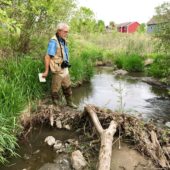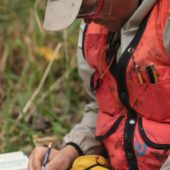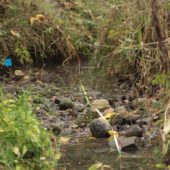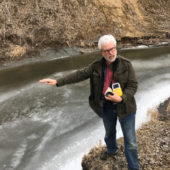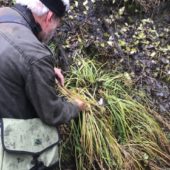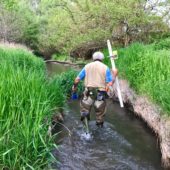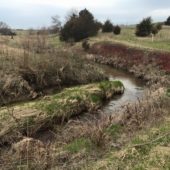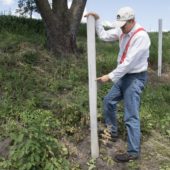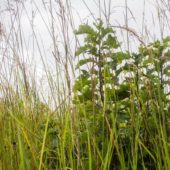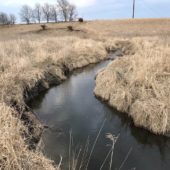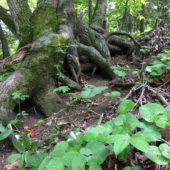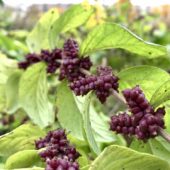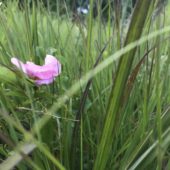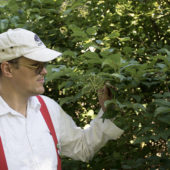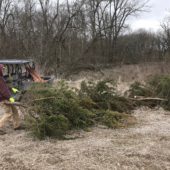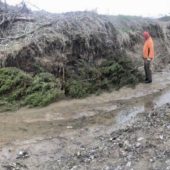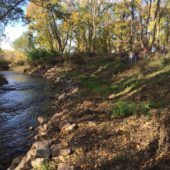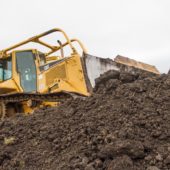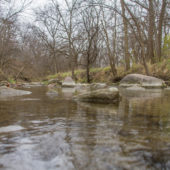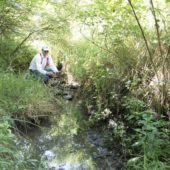Stream Restoration
Throughout Iowa, streambanks are rapidly eroding due to the loss of diverse, deep-rooted perennials, increasingly heavy rainfall events, and water that moves rapidly from fields into waterways through subsurface drainage tile. A legacy of stream straightening and ineffective stabilization techniques such as dumping chunks of concrete slabs on streambanks have exacerbated our state’s water quality and erosion issues.
Prudenterra’s long-lasting solutions to streambank erosion are rooted in an understanding of stream ecology. We combine earthworks with revegetation to restore riparian zones that are rich in wildlife habitat. Rather than relying solely on engineered structures, we use living roots to hold onto soil, slow the flow of water, and filter out sediment and pollutants.
We partner with a water resources engineer (when needed) to conduct stream assessments and create plans for restoration. Then, Prudenterra implements practices including installing riparian and saturated buffers, stabilizing banks with cedar revetments, toe armaments, and re-shaping. We also manage and slow the flow of water with step pools and stilling ponds.
Stream Survey and Project Design
Design a lasting solution to streambank erosion, beginning with a survey to determine its root causes. Stream surveys combine soil and vegetation data collection with field measurements such as channel and bank dimensions, pebble counts, and profiles of the shape of the stream reach and riffe. Then we conduct calculations to know with more certainty the practice design that will be most successful.
Once a stream survey has revealed the causes of erosion, a project design is drafted for revegetation, bank stabilization, and/or flow management. Prudenterra’s designs integrate restoration of native plant communities with engineering to ensure that restored streams are not only stablilized, but enhance water quality, provide habitat for wildlife, and are visually appealing.
Revegetation
The most effective way to hold soil in place along a stream is to establish a buffer of deep rooted native perennials such as trees, shrubs, sedges, rushes, flowers, and grasses. The living roots of buffers not only prevent future streambank erosion, but also filter and slow water that flows over them on its way to the stream. Diverse, native plants create a rich habitat for wildlife, and enhance opportunities for fishing, hunting, foraging, swimming and hiking.
Riparian buffer
Restore trees, shrubs, and other native plants around waterways to stabilize streambanks and capture pollutants from runoff. Riparian buffers have a dramatic impact on wildlife–they provide shelter, food, and shade for fish and other aquatic fauna, and a corridor for terrestrial animals.
Layout and species selection depend largely on landowner objectives such as streambank stabilization, nutrient filtration, native species, or marketable specialty crops. A well-written plan will set you up for success with recommendations to manage invasive species and deer browse.
Saturated buffer
Saturated buffers redirect drainage tile water through wide riparian buffers. The living roots capture 99% of the nitrates from water in light to moderate rainfall events, and half of the overall nitrates in a typical year. The viability of a saturated buffer depends on the site’s topography and soil characteristics. More about how saturated buffers work.
Bank Stabilization
Eroded streambanks sometimes require stabilization before plants can take root. This is achieved through the strategic placement of cut cedar trees or stones, or with mechanical reshaping.
Cedar Revetment
Anchor trees on an eroding streambank to slow the flow of water, facilitate the deposition of sediment, and allow new vegetation to sprout and take root. In addition to being an inexpensive way to stabilize small streambanks, cedar revetments provide great temporary cover for fish and other wildlife.
Toe Armament
Install rock at a precise location along the toe of a bank to halt sloughing bank sedimentation and stabilize the toe. Over time, a more gently sloped bank will take form and new plants will be able to take hold.
Bank Re-shaping
Use an excavator to create a more gentle slope. Mechanical re-shaping enables larger, steeper streambanks with severe erosion to be revegetated. Bank Re-shaping is a component of Streambank Restoration Earthworks.
Flow Management
Step pools
Help lower the elevation of water in a small stream using a series of steps, stabilized with rocks. Step pools slow the flow of water and reduce erosion by dissipating energy and ending upstream head cutting erosion.
Stilling pond
Capture water flowing out of a tile outlet or downspout in a rock-stabilized pond. After the energy is dissipated in the pond, the water flows through a vegetative strip to slowly enter a stream. By slowing the flow of water, stilling ponds prevent the uptake of sediment and consequent head cutting erosion.

